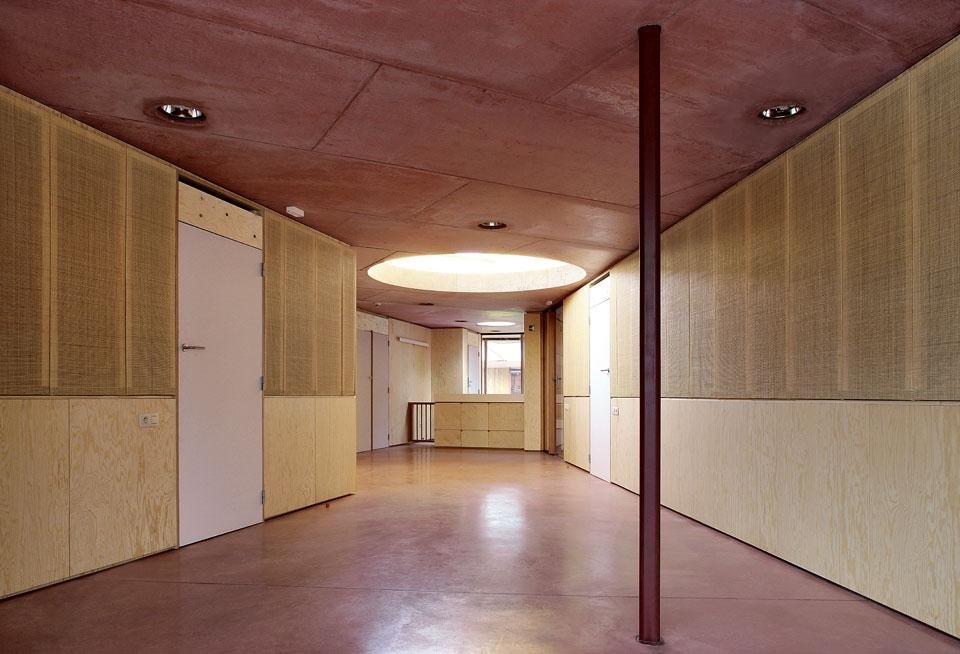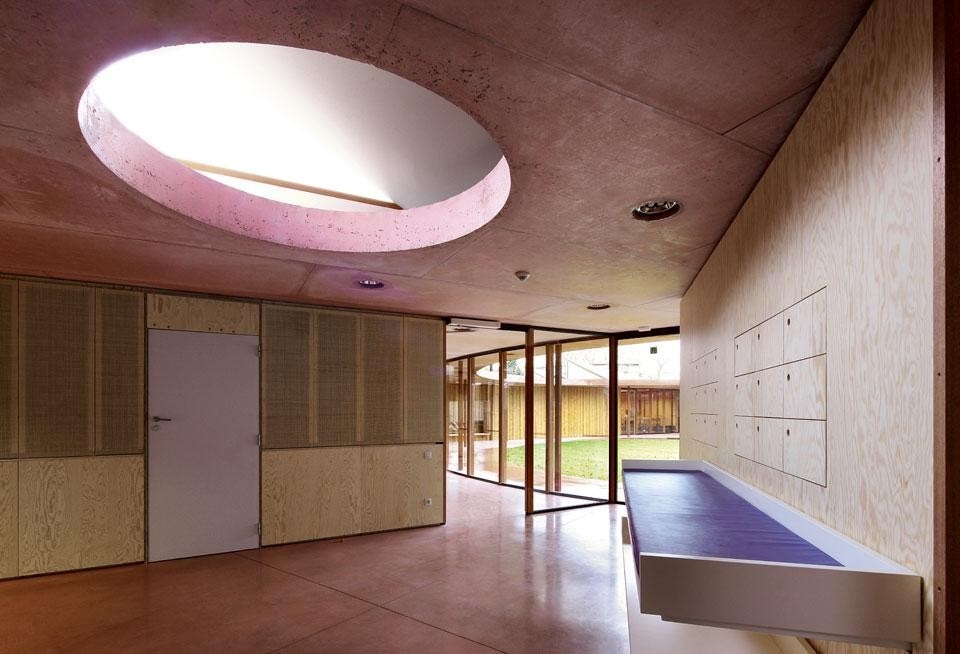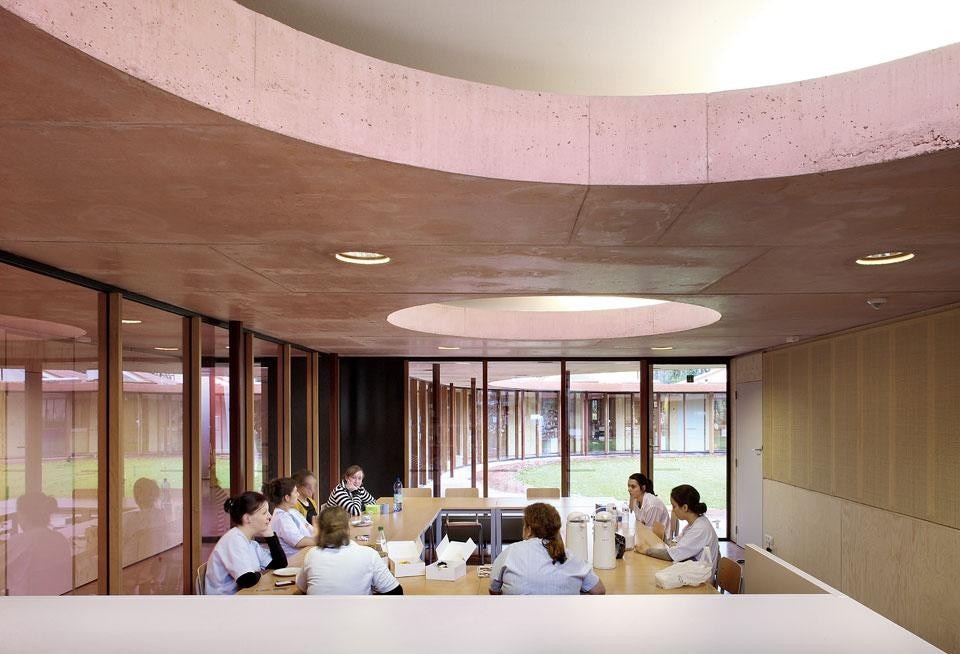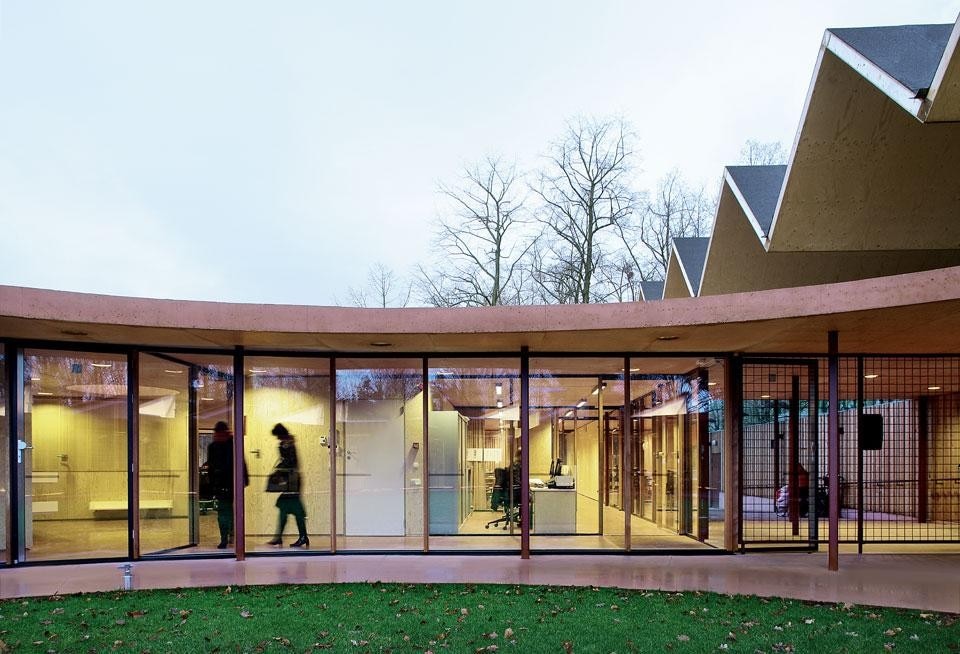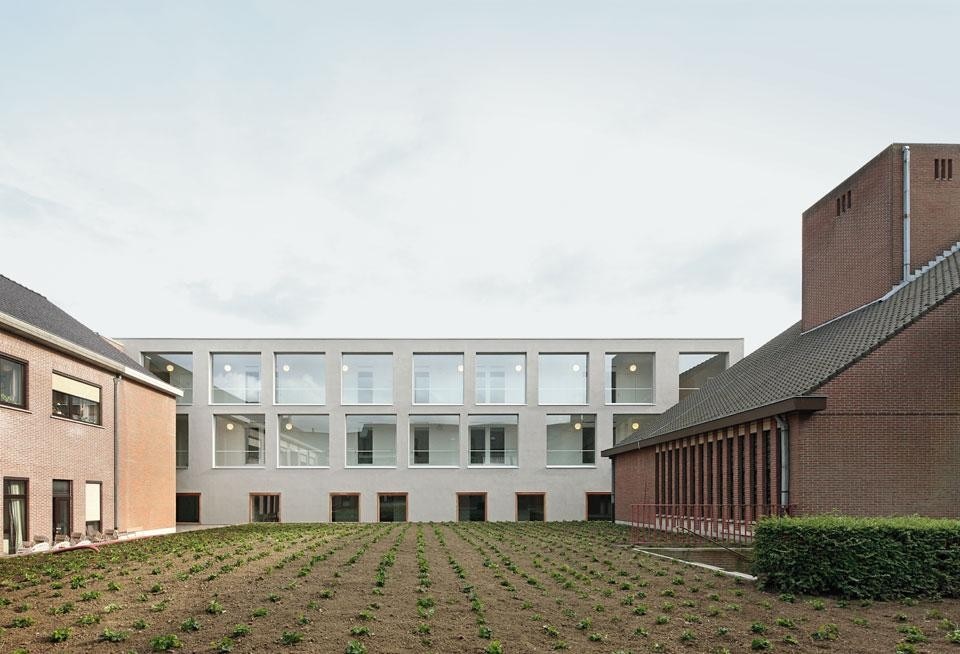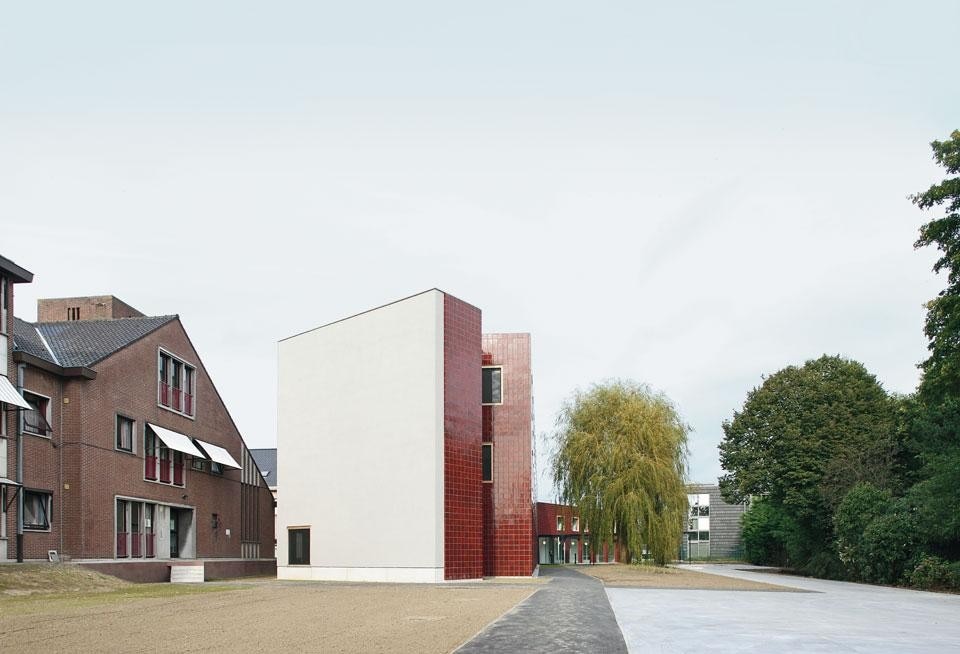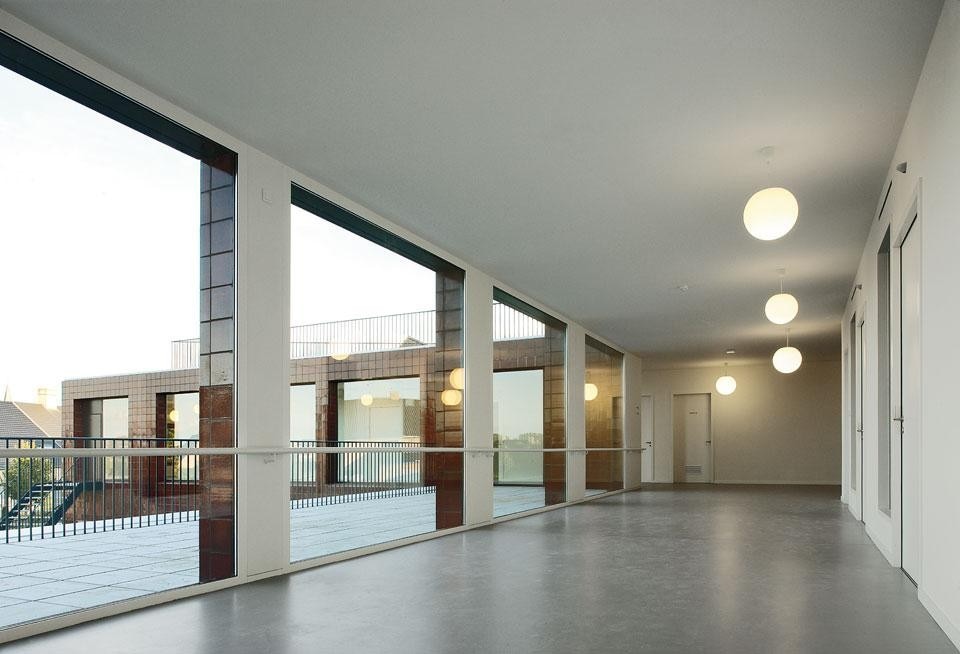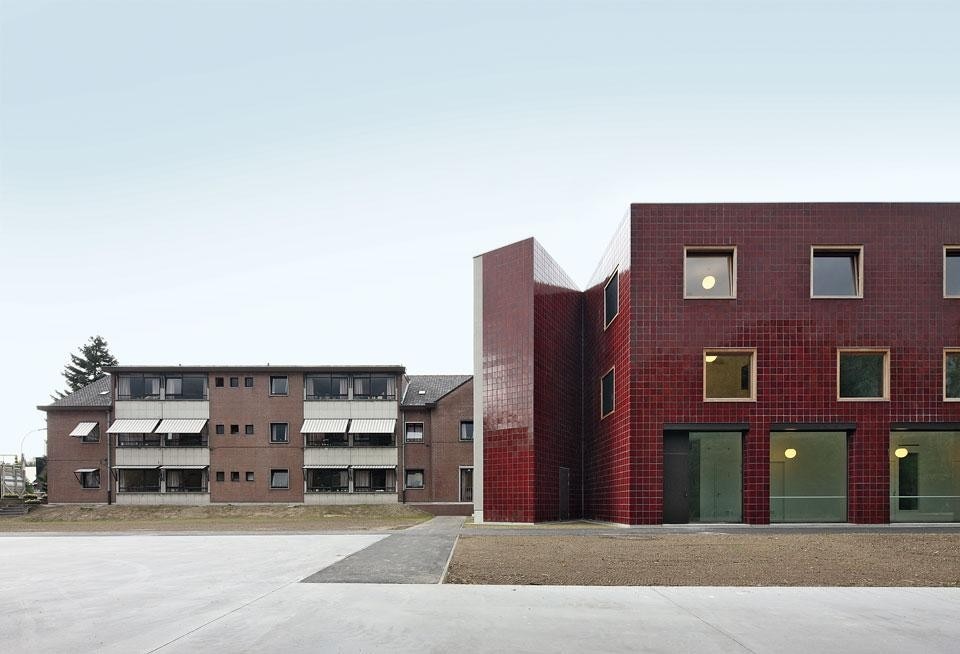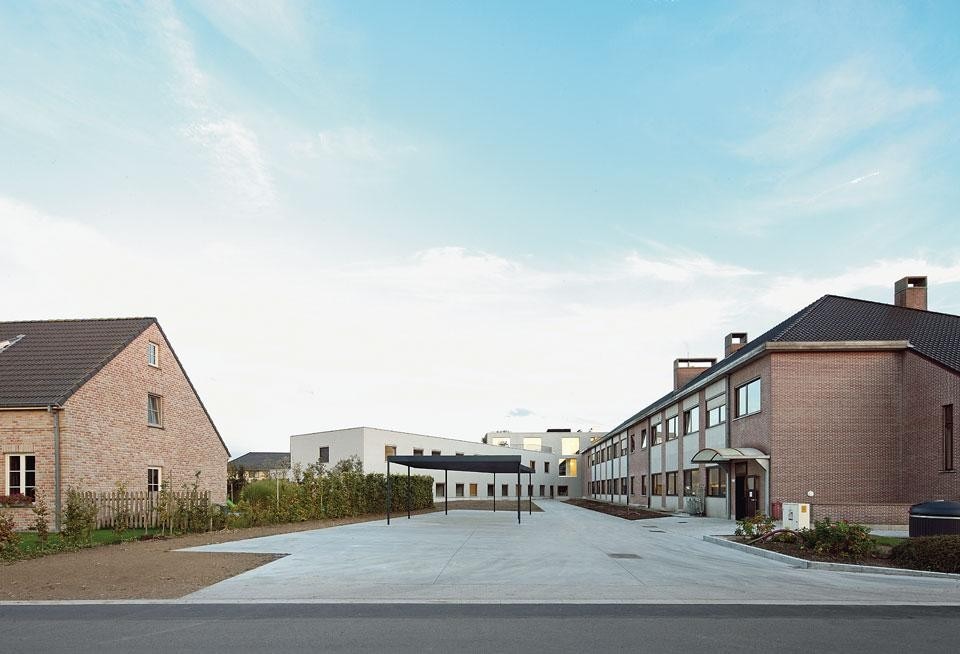Situated not far from Ghent, the Nevele rest home is a threestorey building clad in dark-red glazed tiles. With a large tree standing in front of it, it is attached to an old building that houses its communal facilities. Wedged between houses and sheds, the rest home has large square windows through which its old-age inhabitants can be glimpsed.
The kindergarten and greenery service centre in Merksem, a suburb of Antwerp, are housed in a circular one-storey structure. The kindergarten is built around a patio and lawn, while a quarter section of the circular plan is occupied by the greenery service's machine depots and offices. In both cases, the architects carried out a careful examination of these places' distinctive dynamics, without accepting set patterns or seeking to introduce questionable novelties.
The two projects present spatial devices that are normal yet unpredictable, displaying the richness of our daily actions and giving them dignity without exaggeration. The Belgian office 51N4E set about tidying things up, designating them one by one, endeavouring to include every element in their assessment without feigning blindness to the less appealing aspects.
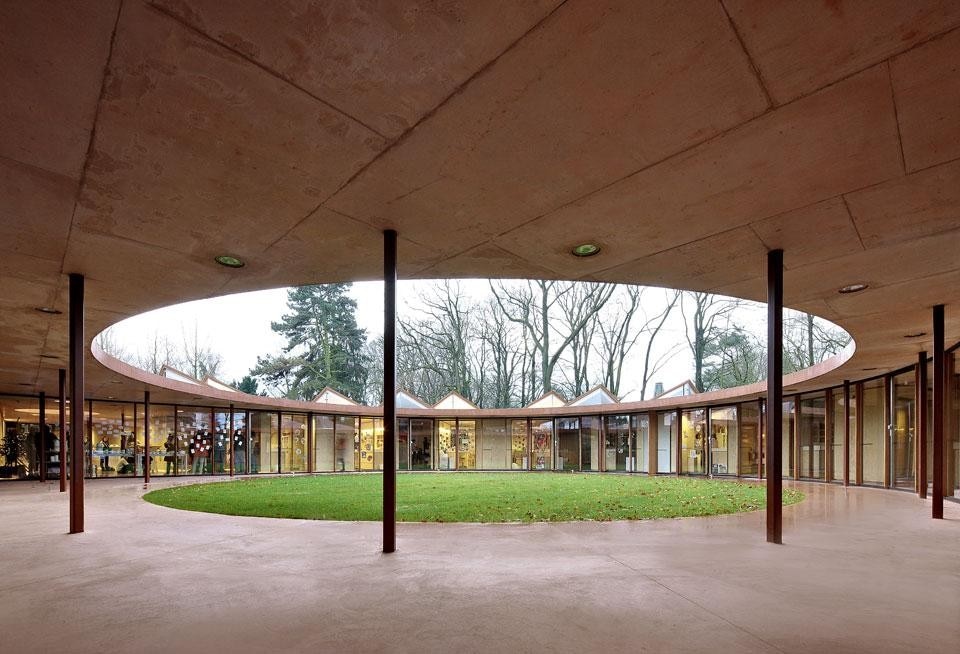
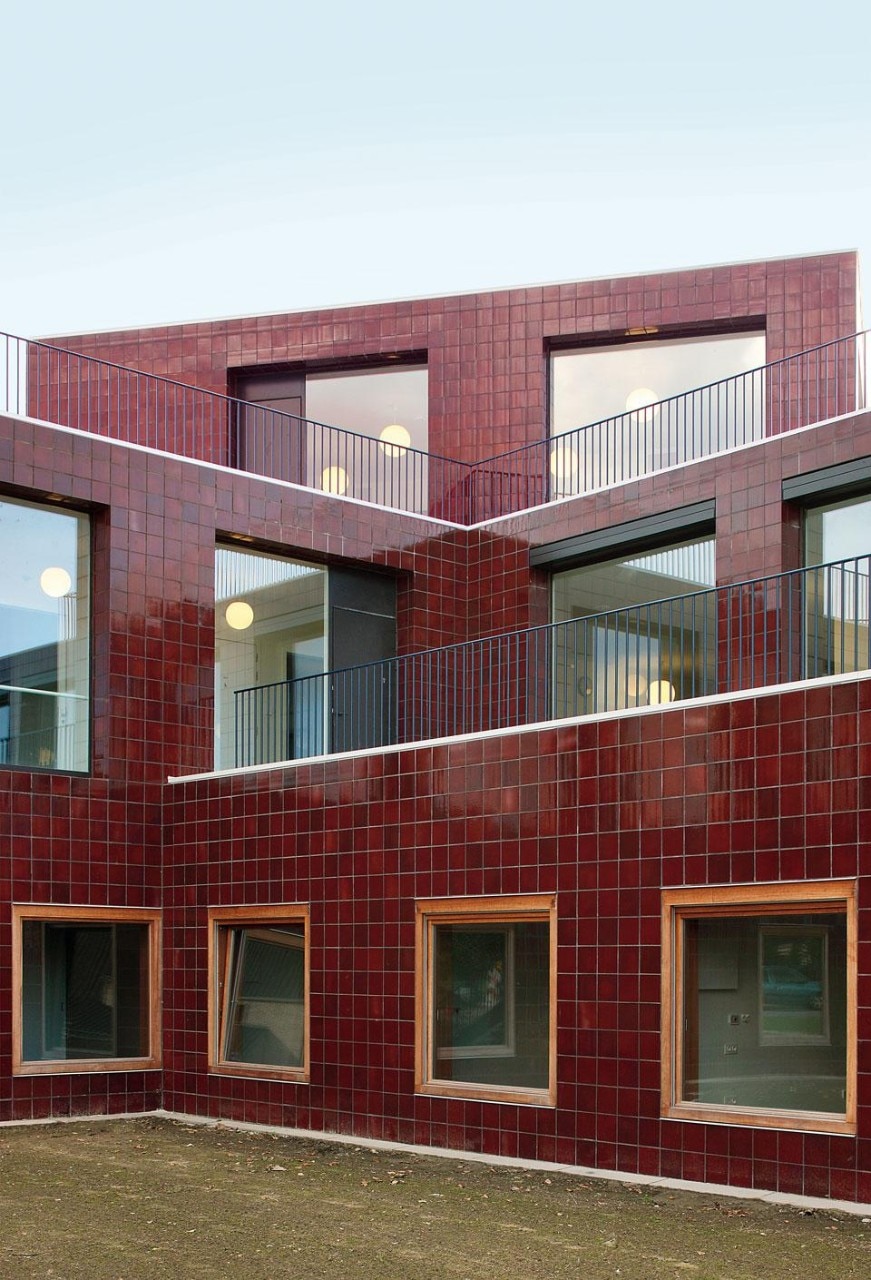
The pairings proposed by 51N4E display sound judgement and absolute realism—their architecture simply observes and welcomes a complexity that already exists in everyday life
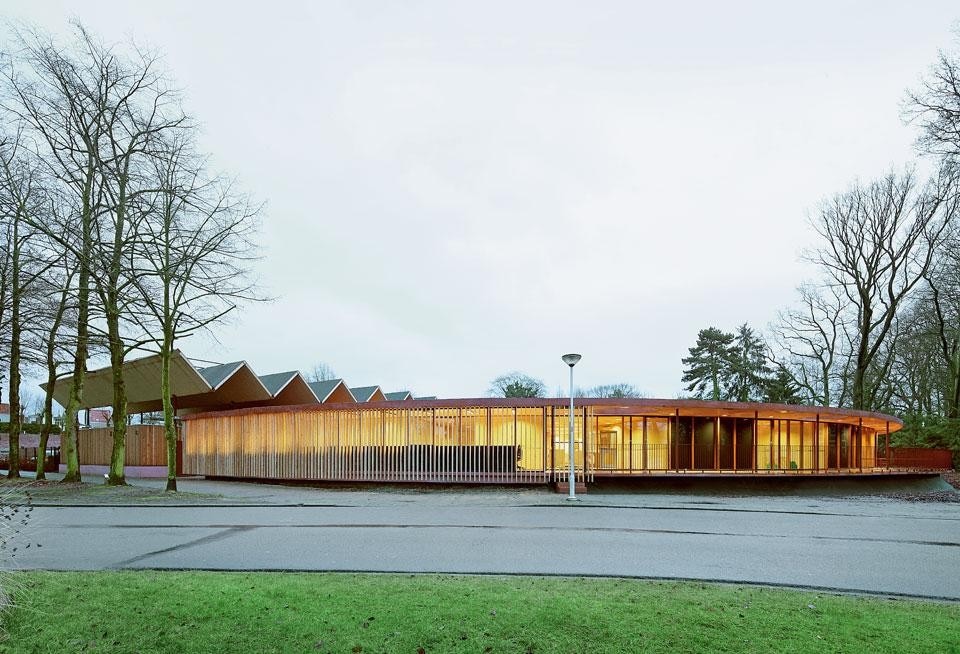
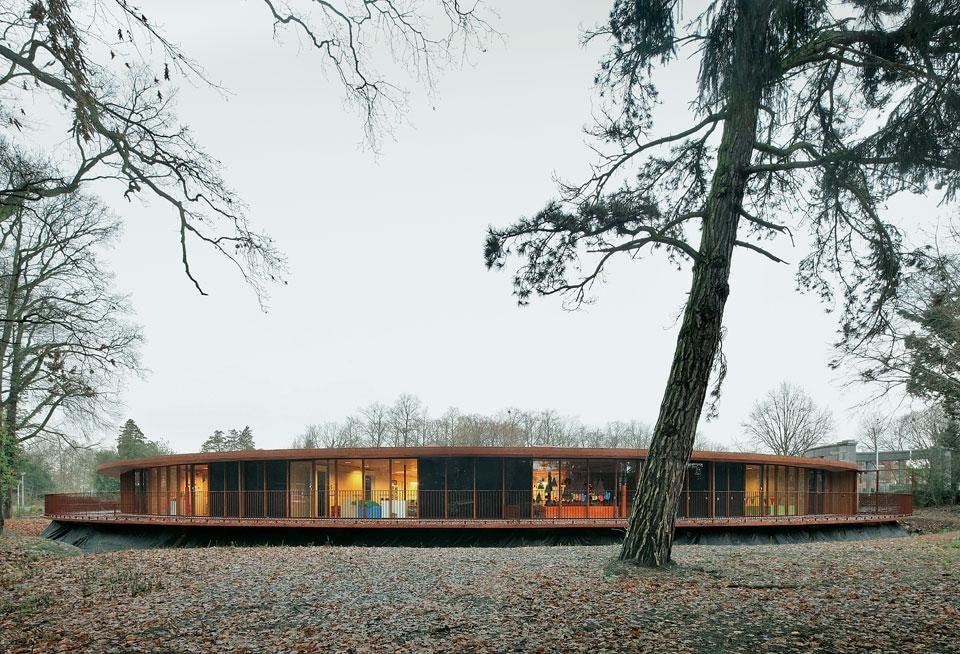
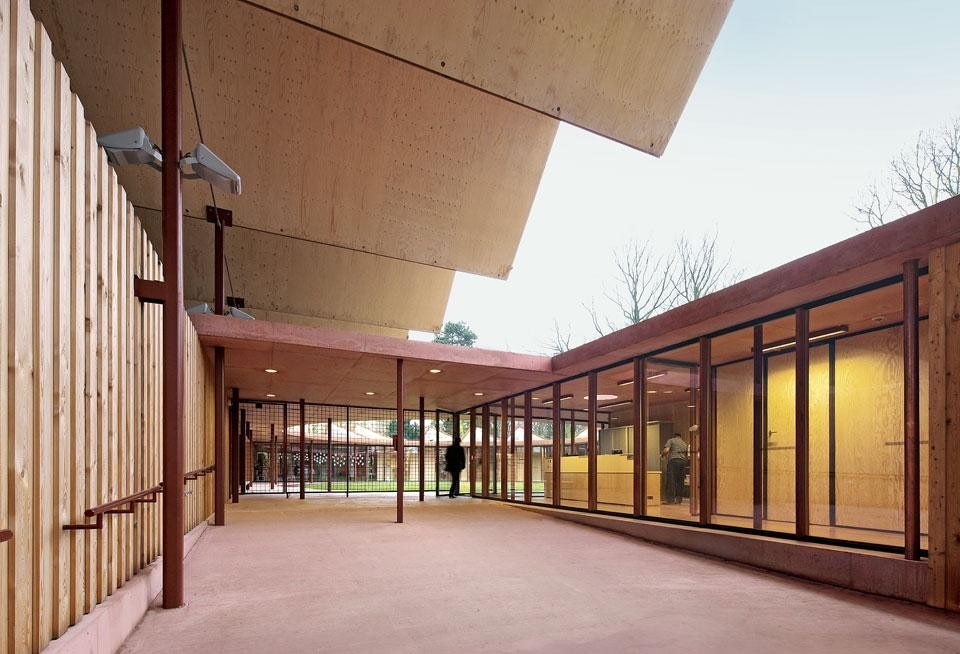
With a show of great discipline, it seems to react to its messy context, as if Giorgio Grassi's library in Groningen had somehow got lost in the urban sprawl without managing to lose its rigidity, stretching in surprise at the absence of certainties provided by the Gothic city. When I saw this building I immediately thought of Grassi's library, though I don't really know why, as I realise it's a rather odd reference in the case of 51N4E. Yet the architects, too, recognised at once that there was something in the analogy. In fact the Nevele rest home is a monument, or at any rate the nearest thing possible to a monument in this city.
